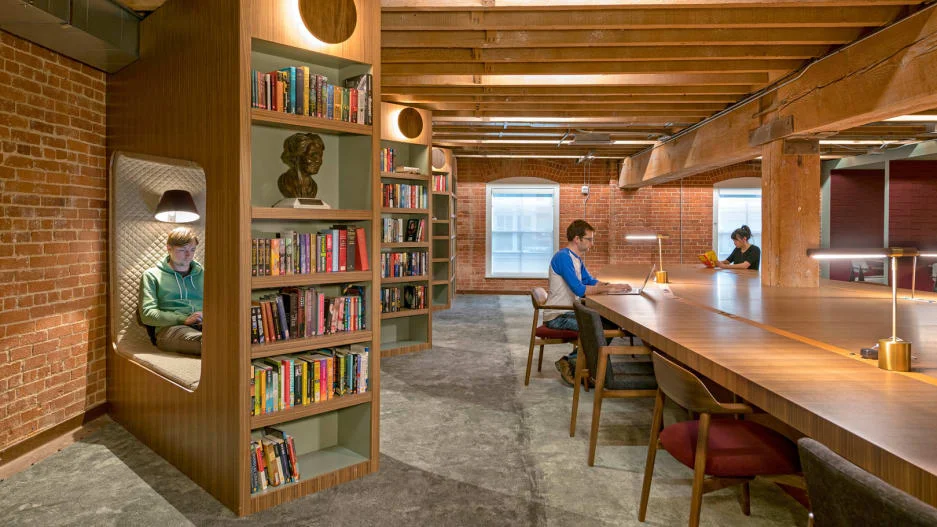[Photo: Christopher Barrett/courtesy Basecamp]
Working remotely is the new normal—and the increasing numbers of employees who work from home are, paradoxically, changing the nature of office design. As more and more companies recognize the value of allowing employees to work from home (the world becomes your talent pool, employees get better work-life balance, and it can even make workers more productive), more companies are operating offices that need to serve both in-person and remote workers.
The shift raises a question for companies: How do you design a space when a significant portion of your workforce uses it rarely or not at all? Fast Company spoke to three partly remote companies—project management software company Basecamp, enterprise software company Atlassian (which makes tools like Trello and Jira), and developer hosting service GitHub—to find out how they’ve designed their offices to accommodate everyone, regardless of where they’re working.
MAKE WORKING AT THE OFFICE MORE LIKE WORKING FROM HOME
When Basecamp got its start back in 1999, the company’s employees were all local. But when the fifth hire—David Heinemeier Hansson, who is now a partner at the company—was based in Copenhagen, Basecamp’s other founders also decided to try out remote work, too.
The remote-first nature of the company has deeply impacted Basecamp’s office design. CEO Jason Fried says he designed the office to “simulate what it would be like if nobody was actually at the office.” That meant making the experience of working in the office to be as close as possible to what it’s like to work from home.
“If you’re at home in a second bedroom or no one’s around during the day, you’re not distracted,” Fried says. “You’re in an environment you can control for the most part and you work in isolation and get into deep work and [aren’t] bothered by other people. We wanted to create an office space to simulate the advantages of that, but also give an opportunity for people to get together in a sound-controlled environment.”
As a result, Basecamp’s office is more of a place to meet. There are acoustic materials on the walls to ensure that it’s always quiet. The desks are spaced at least 10 feet apart so you can’t see anyone when you’re sitting down and working. And for those inevitable conversations, Fried says, there are soundproof rooms.



